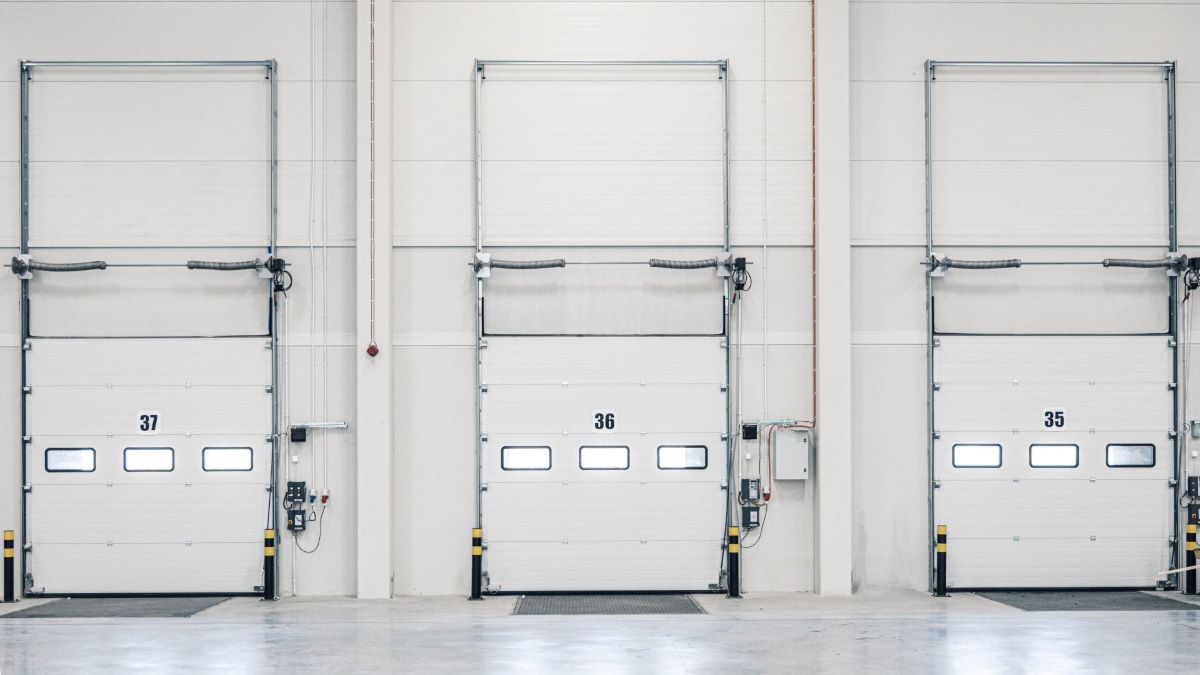At a glance
Insulation is not the only factor for heat loss in a facility. The length of time doors remain open also plays a role – and as such, both automated standard and high-speed roller doors offer some potential for greenhouse gas (GHG) emission reduction when compared with standard manual gates. However, the high investment makes them less attractive than other levers.
The case in context
In terms of energy efficiency, it is crucial to acknowledge the impact of heat loss attributed to air exchange, commonly referred to as ventilation losses. While the proportion of these losses may be negligible in an uninsulated warehouse, they become more consequential in a well-insulated storage facility. Frequent transportation processes directly from the heated building to the outside also intensify ventilation loss.
A closer look: case details and parameters
Gates significantly increase the rate of air exchange. Designed for facility access, they are directly connected to the external environment, and are often left open for extended durations. This tendency is particularly evident with manual doors, which industry experts estimate remain open an average of 6 minutes each time they are opened. However, certain estimations suggest these doors may even remain open for several hours, intensifying the issue.
Unnecessarily opened gates allow exchange of warm interior air with the cooler exterior air for an extended period of time, resulting in significant energy losses due to increased continuous heating efforts. To address this challenge and optimize energy efficiency, one potential solution – in addition to increasing staff awareness and process optimization – is to replace manual doors with more advanced and efficient alternatives.
Assuming an appropriate ventilation system reliably provides fresh air to the facility, two optimization measures are under consideration:
1) A standard roller door that remains open for 30 seconds
2) A high-speed roller door capable of closing automatically after only 5 seconds
Our calculations consider the air exchange rate per door and the resulting energy requirements for heating the ventilated air (ventilation heating load), assuming use of natural-gas-powered infrared heaters.
Results
The transition from manual gates to either automated standard or high-speed roller doors enables a reduction of GHG emissions of approximately 320-350 tons over 15 years with OpEx savings of approximately €120,000. Switching from automated standard to high-speed roller doors, in contrast, has a negligible GHG reduction potential but requires high investments, leading to higher OpEx.
Even though the use of automated gates reduces GHG emissions, it is not a first choice as a stand-alone measure when focusing on GHG emission reduction. Instead, it should be considered as part of a larger measure of process optimization, which offers greater cost reduction potential and additional environmental benefits.
Evaluation: minor economic and environmental benefits
In warehouses using and frequently opening manual gates, installing automated solutions is an option, as the analysis demonstrates economic as well as environmental benefits. However, the financial impact is not large, and automated doors rank among the least effective GHG emission reduction levers identified, making this measure an ideal supplement to the overall emission strategy.
Feel free to write us a message



